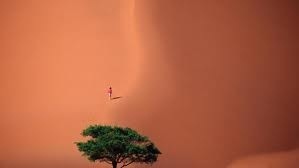All Africa
BY ALEXACTUS T KAURE

I START with my conclusion. The conclusion is simple to critical student of African political economy. That is: many of us are not likely to see the integration of Africa either at the regional or continental level given the way the project was conceptualised or presented.
Put together, many of these regional entities are either too big to be politically functional and, individually, some countries are either too small or poor to be economically viable. Issues of functionality and viability are crucial here. Thus I have a different proposal as to how a new map for a post-colonial Africa should look like although someone can still argue that there is no such thing as post-colonial Africa but only neo-colonial Africa.
But if some people are unhappy with the designation ‘post-colonial’ then one can still use the term ‘post-Berlin’ because it was at the Berlin Conference of 1884 where the major European powers sliced the African continent into the existing boundaries – basically without regard to the people who were so divided – either politically or culturally.
Thus what I will do here is to break up some of the boundaries, scrap some and re-arrange them. Here is how I would like to see the boundaries of a new Africa if we are to address the issues of economic viability and political functionality. In southern Africa I would put South Africa, Namibia, Lesotho, Swaziland and Botswana together. This is only logical because the five countries are already part of the South African Custom Union (SACU). Thus they already have a long bond forged by historical accident.
Then, the former two Rhodesias, now of course, Zambia and Zimbabwe plus Mozambique and Malawi are put together to form another country. When I was on a study tour to Lake Malawi, in 1994, with other colleagues at the University of Namibia’s Multi-disciplinary Research Centre (MRC), I was surprised that some of the boundaries are so obviously artificial in Africa. At one point on the road we were travelling on, what divided the Malawians and Mozambicans was a tar road. Thus, people would just stand in the middle of the road to exchange goods – there were no immigration officers; only the police to maintain order.
The East African states of Kenya, Tanzania, Uganda and new state of South Sudan can form another country. Remember the first three are part of the East African Community and also share Swahili as a lingua franca in addition to English which is the official language and which South Sudan has also adopted. Maybe this will help stop the competing claim as to whether Mt. Kilimanjaro is in Kenya or Tanzania.
The troubled states of Rwanda, Burundi, and here I’m walking on eggs, part of eastern DRC must join these already small states to form one country otherwise we will witness the constant warfare necessitated by the search for more breathing space both in terms of geographical space and economic resources of those governments. Ideally the problems could be solved politically not militarily as they have been trying to do over the years.
Then Ethiopia, Somalia (assuming that it has put itself together again), Eritrea and Djibouti can form the other cluster. One is aware of the violent break up of Eritrea from Ethiopia but they can hopefully happily live together again.
I know that Sudan and Chad always had problems with each blaming the other of supporting rebels in each other’s country. But again this can be/have been resolved. So Chad, Sudan and the Central African Republic can form yet another new country.
As with North Africa there should be no major problems. Thus Algeria, Egypt, Morocco, Tunisia and the politically contested territory of Western Sahara can form the other country and thus resolved the Saharawi problem in the process.
To the desert countries of Mauritania, Mali and Niger, I would add Burkina Faso to form yet one new country. Benin Nigeria and Cameroon are grouped into another category.
Some of you might remember what used to be called Senegambia. That was the union between Gambia and Senegal. I would put them together again and then add the two Guineas, plus Liberia and Sierra Leone to complete that list.
The Ivory Coast, Ghana and Togo would form the other cluster. Then the oil-rich Gabon, Congo (Brazzaville) and Equatorial Guinea would form one new nation. Then there are other two countries that I would roughly call the ‘stand alone”. These are Angola and the Democratic Republic of Congo. The reason is because these two countries are already big enough and have a variety of resources not just a single resource.
I have deliberately left out the islands of Cape Verde, Sao Tome and Principe as well as Madagascar (currently a member of SADC) for obvious geographical problems. If we count the different groupings that I have put together, one would probably end up roughly with fourteen ‘countries’ instead of the 50+ countries we currently have. That’s my new map of a powerful and viable post-colonial Africa.






